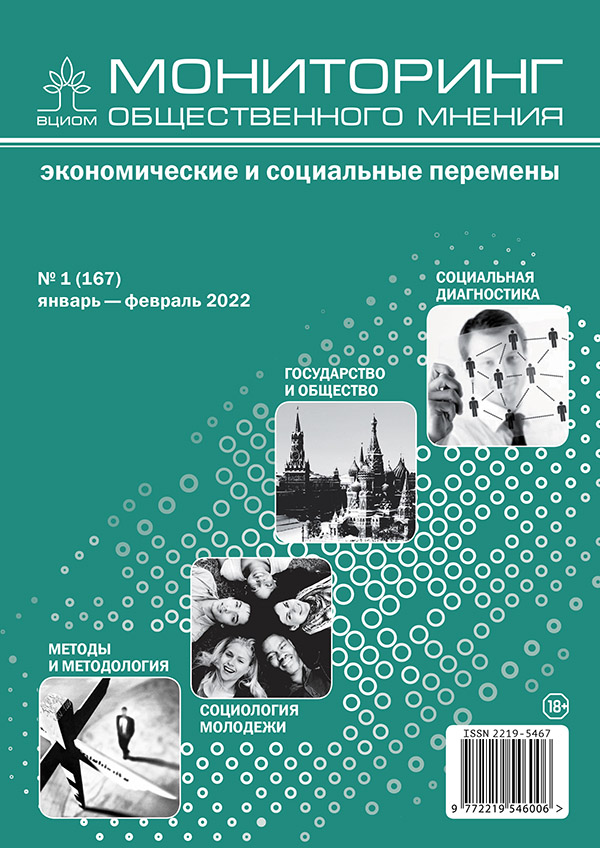Types and Determinants of the Russians’ Social Capital
DOI:
https://doi.org/10.14515/monitoring.2022.1.1869Keywords:
social capital, trust, types of the social capital, social networks, bonding social capital, bridging social capital, binding social capitalAbstract
Despite the growing interest in the study of social capital in Russia and abroad, approaches to its measurement are still cause controversial. The task of constructing the generalized indicators that measure the volume of the social capital in general or its different types looks the most difficult. At the same time, to estimate the return on social capital, it is necessary to measure it correctly. The aim of this research is to develop a methodology for measuring various types of individual social capital, as well as its application to analyze the differentiation of the social capital of Russians and its factors. The authors use data of the Russia Longitudinal Monitoring Survey of the HSE University (RLMS HSE) for 2016, since a block of questions about the individual’s involvement in social networks was added to the questionnaire of this wave. Factor analysis identified five latent variables corresponding to different types of social capital: 1) the capacity of online network, 2) the ability to rely on the outside help, 3) the density of communication with friends, 4) involvement in church activity, and 5) the density of communication with relatives, living separately. The third and fifth of the mentioned types might be attributed to “bonding” social capital, and the first one — to “bridging” capital. The second type represents the “potential” social capital. The fourth type can be attributed to the “binding” social capital. The resulting variables were used as dependent variables in regression models. The analysis showed that gender, age, education, place of residence and birth, marital status, presence of children, religiosity, and confession have significant effect in the models. The strength and direction of these effects differ for certain types of the social capital. Using the cluster analysis method, the authors built a typology of social capital, covering four classes of respondents, namely those characterized by: 1) a low level of all types of the social capital; 2) high level of bridging and the moderate level of the bonding social capitals; 3) a high level of the binding social capital; 4) high level of the bonding and bridging social capitals.
Acknowledgements. The research leading to these results has received funding from the Basic Research Program at the HSE University, Project “Monitoring socio-economic behavior of Russian households and population in the developing digital society”.
Downloads
Published
How to Cite
Issue
Section
License
Copyright (c) 2022 Monitoring of Public Opinion: Economic and Social Changes Journal (Public Opinion Monitoring) ISSN 2219-5467

This work is licensed under a Creative Commons Attribution-NonCommercial-ShareAlike 4.0 International License.






